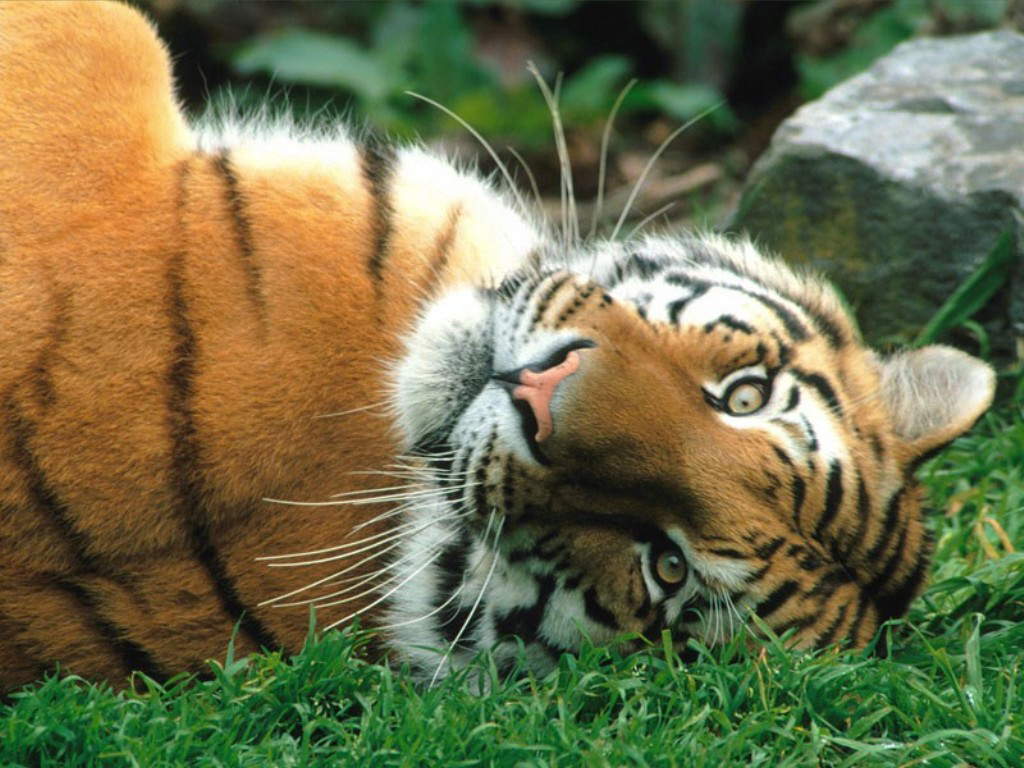SIBERIAN TIGER
CLASSIFICATION GENERAL INFO SPECIAL FEATURES HABITAT DIET REPRODUCTION BODY SYSTEMS HUMAN IMPACT WEBLINKS SOURCES

Kingdom: Animalia
Phylum: Chodata
Class: Mamalia
Order: Carnivora
Family: Felidae
Genus: Panthera
Species: Panthera tigris
WELCOME TO OUR WEBSITE!!!!
SPECIAL FEATURES
No one knows why tigers are striped,
but scientist think the stripes act as camouflage, and help tigers
hide from their prey. No two tigers have the same pattern of
stripes, just like zebras, and snowflakes.
REPRODUCTION
Tigers have separate sexes, direct development and have babies out
side the body.
The Siberian tiger, also known as the Amur, Manchurian, Altaic, Korean, North China or Ussuri tiger is a breed of tiger that lives in the Amur-Ussuri region of Primorski-Krai and Khabarovski Krai in eastern Siberia. Siberian Tigers can grow up to 130 inches and can weigh up to 800 pounds or more. The largest recorded Siberian Tiger was weighed in at 1025 pounds.

BODY SYSTEMS
This unique tiger is is not so unique when it comes to the body
systems, like most mammals they have a two loop circulatory system,
closed circulation, and a complex brain. Their digestive system is a
normal digestive of a stomach, liver, pancreas, small intestine,
and a large intestine. Tigers excrete nitrogen waste as urea.
They have two kidneys and they breath with lungs, some say they are
distant cousins to us humans, just kidding.
Websites.
http://www.alexandgregory.com/siberian_tigers
http://en.wikipedia.org/wiki/Siberian_tiger
http://animals.nationalgeographic.com/animals/mammals/siberian-tiger/
http://www.tigersincrisis.com/siberian_tiger.html
This special breed is known for living in the cold areas, like Siberia, and like to make their nests near low lands where water is profuse. However they are also kniown for living in the low mountains, near rives, or bodies of water.

DIET:
The tiger lives on most any animal, mostly wild boar and dear, but
they will eat tons of other animals, like pigs, dogs, sheep, cattle,
and when times get rough, they will attack a camel. When they
aren't able to get a hoofed animals they will attack bears, or
uncommonly but still relevant humans.
HUMAN IMPACT:
The gorgeous coat of the siberian tiger is prized by poachers and
wealthy women alike. The bones and other parts are also used in
some Chinese medicinal practices. Because of this, poaching has
destroyed a large portion of the Siberian Tiger population.
Currently there are only 350-450 Siberian Tigers in the wild. In
addition, deforestation is destroying the tiger's habitat.